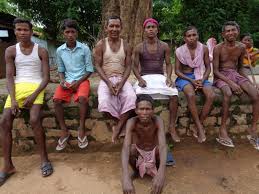Birhor Tribe:

Around 550 residents, mostly belonging to the Birhor tribe, of Fulwariya hamlet in Koderma district would soon receive electricity supply, ending nearly eight decades of darkness.
- The Birhor are a forest-dependent semi-nomadic tribal community concentrated in the eastern central Indian state of Jharkhand.
- Some of them are also found in Chhattisgarh, Odisha, and West Bengal.
- The Birhor community is one of eight Particularly Vulnerable Tribal Groups (PVTGs) identified in Jharkhand.
- The term “Birhor” is derived from the words “Bi”, meaning “Jungle”, and “hor”, meaning “man”; thus, it means “the man living in Jungle” or “people of Jungle”.
- They belong to the Porto-Australoid stock.
- The Birhor follow a mixture of animism and Hinduism.
- The Birhor tribes have their own language, known as Birhor, which belongs to the Munda group of languages of the Austroasiatic language family.
- Their language has similarities with the Santali, Mundari, and Ho languages.
- However, due to increased contact with other communities and the influence of mainstream languages, many Birhor people are bilingual or trilingual, with proficiency in Hindi, Bengali, or other regional languages.
- The Birhors are of short stature, with long heads, wavy hair, and broad nose.
- They claim they have descended from the Sun and believe that the Kharwars, who also trace their descent from the Sun, are their brothers.
- Ethnologically, they are akin to the Santals, Mundas, and Hos.
- They typically live in small, close-knit communities, and their social organization is primarily based on kinship ties.
- The tribe is divided into several clans, and each clan has its own leader who plays a crucial role in resolving disputes and maintaining social harmony within the community.
- They live in small settlements in the forest or on the outskirts of villages.
- The temporary Birhor settlements are known as tandas or bands.
- These consist of at least half a dozen huts of conical shape, erected with leaves and branches.
- Birhor society is characterized by a strong sense of community, cooperation, and mutual support.
- The “primitive subsistence economy” of the Birhors has been based on nomadic gathering and hunting, particularly for monkeys.
- They make ropes out of the fibres of a particular species of vine, which they sell in the markets of the nearby agricultural people.
- Some of them have settled into stable agriculture.
- According to socio-economic standing, the Birhors are classified into two groups. While the wandering Birhors are called Uthlus, the settled Birhors are called Janghis.
- The Birhor tribe has a rich knowledge of traditional medicine and uses various medicinal plants found in the forest for treating common ailments.




